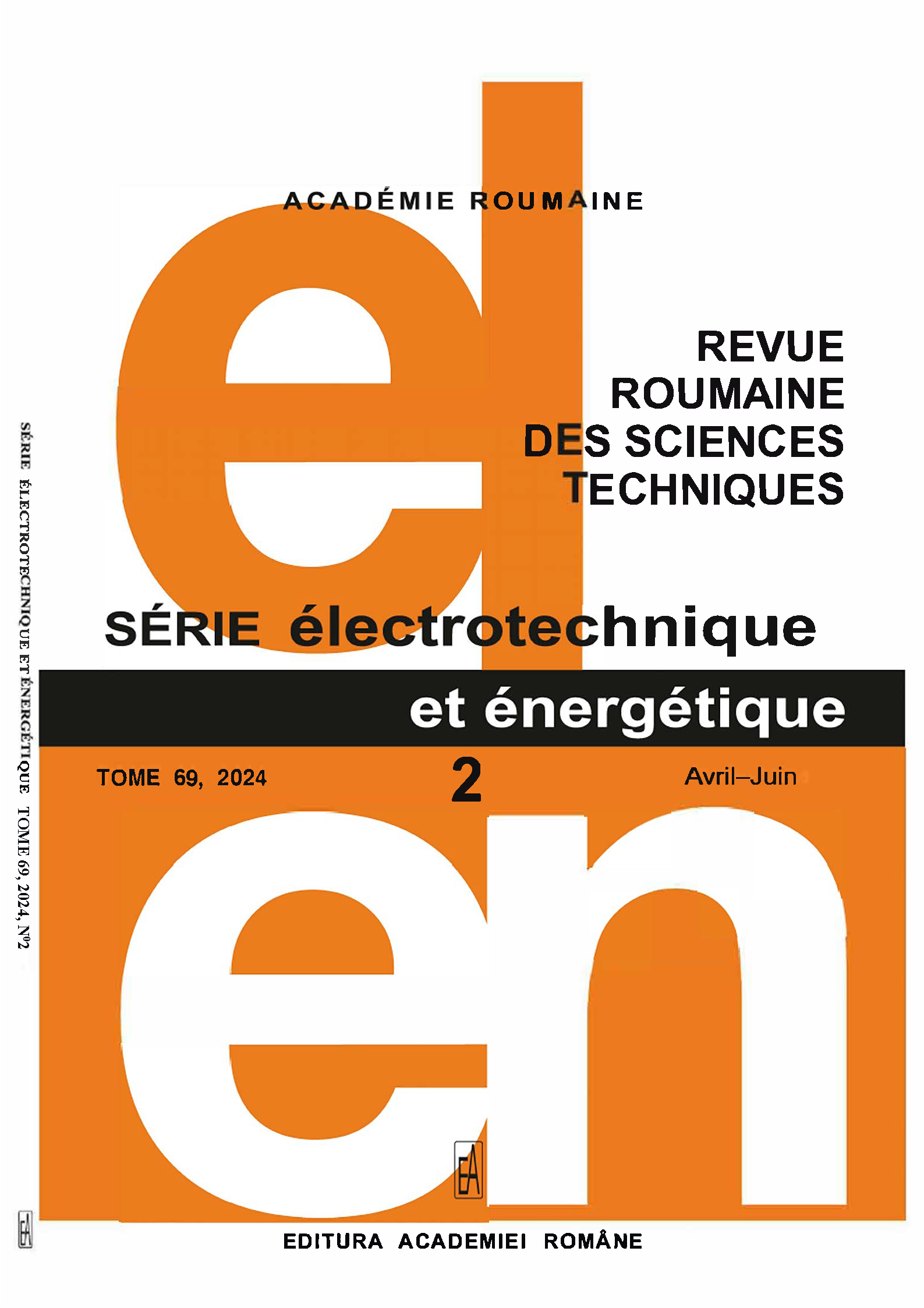SYSTÈME EXPERT EN GESTION DE PROJETS AVEC GESTION AVANCÉE DE DOCUMENTS POUR LES INSTITUTIONS PUBLIQUES
DOI :
https://doi.org/10.59277/RRST-EE.2024.2.17Mots-clés :
Apprentissage automatique, Répartition intelligente, Allocation des ressources en temps réel, Système avancé de gestion de documents, Algorithme de routage, Optimisation des ressources, Système d'information géographique (SIG), Gestion du traficRésumé
Ce document aborde les défis logistiques des institutions publiques, en se concentrant sur le suivi et la transparence des projets. Un aspect difficile de cette entreprise consiste à maintenir un registre clair et transparent des projets en cours tout en assurant une communication efficace avec toutes les parties prenantes concernées. Grâce à l'apprentissage automatique et à un ensemble complet d'outils (pour éliminer les tâches répétitives et chronophages), les institutions peuvent gérer et suivre les projets plus efficacement avec moins de main d'œuvre et de ressources.
Références
(1) R. A. Novack, B. Gibson, Y. Suzuki, J. J. Coyle, Transportation: A Global Supply Chain Perspective, Cengage Learning (2018).
(2) M. Christopher, Forth Edition Logistics and Supply Chain Management, Library of Congress Cataloging-in-Publication Data (2011).
(3) D. H. Stolfi, E. Alb, Sustainable Transportation and Smart Logistics, Elsevier Inc. (2019).
(4) A. Sampaio, M. Savelsbergh, L. Veelenturf, T. van Woensel, Sustainable Transportation and Smart Logistics, Sustainable Transportation and Smart Logistics Decision-Making Models and Solutions (2019).
(5) J. Barcelo, Sustainable Transportation and Smart Logistics, Sustainable Transportation and Smart Logistics Decision-Making Models and Solutions (2019).
(6) P. Carroll, P. Keenan, Decision-Making Using Exact Optimization Methods in Sustainable Transportation, Sustainable Transportation and Smart Logistics, Elsevier (2019).
(7) J. Faulin, S.E. Grasman, A.A. Juan, P. Hirsch, Sustainable Transportation and Smart Logistics Decision-Making Models and Solutions, Elsevier (2019).
(8) N. Boysen, S. Fedtke, S. Schwerdfeger, Last-mile delivery concepts: a survey from an operational research perspective, OR Spectrum, 43, pp. 1–58 (2021).
(9) A. Burkov, The Hundred-Page Machine Learning Book, https://themlbook.com/ (2019).
(10) B.M. Rashed, N. Popescu, Classification by a stacking model using CNN features for medical image diagnosis, U.P.B. Sci. Bull., Series C, 86, 1, 18 p. (2024).
(11) H.B. Alwan, K.R. Ku-Mahamud, Convolutional neural network algorithm for cancellable face template, U.P.B. Sci. Bull., Series C, 86, 1, 18 p. (2024).
(12) H. Huang et al., Research on the development and application of vehicle-goods matching system based on Saas and Cscw, U.P.B. Sci. Bull., Series C, 84, 2, pp. 31–44 (2022).
(13) A.V. Dragomir, C.V. Blanaru, Theoretical aspects regarding cyber security in Romanian public institutions, Law, Society & Organizations, 10 (1), https://ideas.repec.org/a/cmj/lawsor/y2021i10p51-56.html (2021)
(14) F. Lacatusu, I. Damian, A.D. Ionita, M. Lacatusu, Smart building manager software in cloud, U.P.B. Sci. Bull., Series C, 83, 4, 28 p. (2021).
(15) M.M. Taye, Theoretical understanding of convolutional neural network: concepts, architectures, applications, future directions Computation, 11, 3, 52 (2023),
(16) H. Zhang, Feature selection optimization method of traffic congestion case database based on TF-IDF algorithm, U.P.B. Sci. Bull., Series C, 84, 4, pp. 235–248 (2022).
(17) G. Long, A. Wang, T. Jiang, W. Zhu, Traffic signal self-organizing control based on minimum expected traffic flow delay rule, U.P.B. Sci. Bull., Series C, 84, 2, pp. 203–220 (2022).
(18) C. A. Iordache, C. V. Marian, Industrial expert system for intelligent traffic lane allocation using machine learning and pattern recognition, 15th International Conference on Electronics, Computers and Artificial Intelligence (ECAI) (2023).
(19) A. Vasilateanu, N. Goga, L. Guta, M. Mihailescu, B. Pavaloiu, Testing Wi-Fi and Bluetooth low energy technologies for a hybrid indoor positioning system, IEEE International Symposium on Systems Engineering (ISSE) (2016).
(20) R. Jardim, M. dos Santos, E. Neto, F.M. Muradas, B. Santiago, M. Moreira, Design of a framework of military defense system for governance of geoinformation, Procedia Computer Science, 199, 1, pp. 174–181 (2022).
(21) J. Zhu, P. Wu, Towards effective BIM/GIS data integration for smart city by integrating computer graphics technique, Remote Sens., 13, 10, 1889 (2021).
(22) C.V. Marian, M. Iacob, D.A. Mitrea, GIS-based integrated system with interactive digital map for archaeological heritage protection, 14th International Conference on Electronics, Computers and Artificial Intelligence (ECAI), Ploiesti, Romania, pp. 1–4 (2022)
(23) C. V. Marian, M. Iacob, The ArchTerr project - a GIS-based integrated system for cultural and archaeological heritage protection (pilot phase tested in Romania), Applied Sciences, 12, 16, 8123 (2022).
(24) A. Arpadzic, A. Bosovic, A. Merzic, M. Music, Impacts of deregulated and regulated electric vehicle charging in a distribution network, Rev. Roum. Sci. Techn. – Électrotechn. Et Énerg., 67, 4, pp. 451–456, (2022).
Téléchargements
Publiée
Numéro
Rubrique
Licence
(c) Copyright REVUE ROUMAINE DES SCIENCES TECHNIQUES — SÉRIE ÉLECTROTECHNIQUE ET ÉNERGÉTIQUE 2024

Ce travail est disponible sous licence Creative Commons Attribution - Pas d'Utilisation Commerciale - Pas de Modification 4.0 International.


